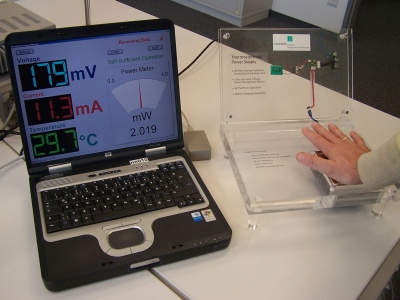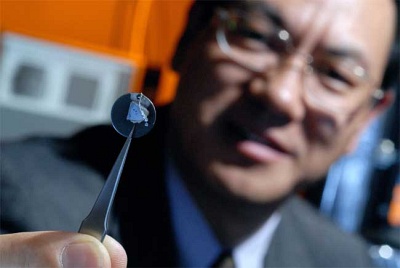
Toward Self-Powered Medical Implants
Roger Shih






Human Power
Introduction
Power supply and consumption stands as one of the most fundamental challenges for modern portable technology. Any cordless device that consumes electricity, be it a notebook computer, cellular phone, or implanted pacemaker, faces an implacable limit on its functional lifespan before it must return to a wall outlet for a recharge, or have its battery swapped out. Inevitably, this time limit is never quite as long as we would like: For a computer it may be mere hours; for a pacemaker, years. Unfortunately, while years of operation may sound good at first, the need for another surgery to extract and replace an implanted device is costly, inconvenient, stressful, and always risky to some degree.
The human body expends a great deal of energy in the course of daily life, not all of which is used efficiently. The flexing of muscles and stressing of joints as we move, the expansion and contraction of the chest wall as we breathe, and even the heat we constantly generate to maintain our body temperature all represent untapped sources of energy that could potentially power small electronic devices with negligible added burden to the user. Self-sufficiency for biomedical implants is a particularly elegant concept, in that the user’s very life can sustain the device that in turn sustains their life.
To this end, scientists are exploring various mechanisms for harnessing the human body’s excess power, including the heat of the skin, the pumping of blood, the shifting of muscles, and the compression of joints. Materials with thermoelectric, piezoelectric, and semiconducting properties are all being evaluated and giving rise to prospective energy-scavenging designs. Although attempts thus far have produced limited current and no final products, in each case the results have shown potential for improvement and/or scale-up, and research carries on. With continued effort and a little luck, the dream of self-powered biomedical implants may yet be realized.

